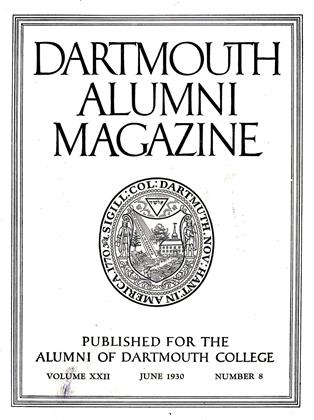BYJULIUS GRODINSKY. D. Appleton and Co., New York. 1930.
In view of the recent publication of the Interstate Commerce Commission's plan for railroad consolidation and the present discussion of the whole subject in Congress and throughout the country, Dr. Gordinsky's study should be of particular interest.
The author views the consolidation provisions of the Act of 1920 almost wholly from the standpoint of their relation to the problem of the strong and weak roads. While it is unquestionably true that Congress, in framing this section of the Transportation Act, was concerned primarily with the plight of the weak roads, there is no reason why the matter cannot now be reconsidered with special reference to possible economies in investment and operation. Beyond stating his position that the possibility of such economies has been greatly exaggerated, the author chooses not to examine this aspect of the problem of consolidation.
Dr. Grodinsky presents a fascinating picture of the strategy lying behind the acquisition by railroads of control over other roads. It is his view that the driving force behind such acquisitions of control has been the desire to control traffic movements, and thus to strengthen the position and swell the earnings of the dominating carrier. In support, numerous interesting illustrations of ways and means whereby this purpose may be served—in spite of nominally "open" gateways and the shipper's legal right to select his route—are supplied from recent actual cases. This section of the book is most valuable; the weaknesses are encountered in the analytical portions.
The concluding chapter includes a survey of certain of the weaknesses of our present policy concerning railroad consolidation and some proposals designed to permit the Interstate Commerce Commission to exercise more effective control.
Department of Economics.
 View Full Issue
View Full Issue
More From This Issue
-
 Article
ArticleAlumni Associations
June 1930 -
 Article
ArticleThe Dartmouth Indians
June 1930 By Leon B. Richardson -
 Article
ArticleThe Use of Leisure
June 1930 By Nelson A. Rockefeller -
 Article
ArticleA Student on His Own
June 1930 By H. S. Embree -
 Article
ArticleTrustee Meeting
June 1930 -
 Lettter from the Editor
Lettter from the EditorEditorial Comment
June 1930
Nelson Lee Smith
Books
-
 Books
BooksProfessor Roy P. Forster
November 1946 -
 Books
BooksWine of Fury
November, 1924 By Eric P. Kelly -
 Books
BooksThe Start of It All
September 1975 By J.H. -
 Books
BooksHow Much Freedom?
JUNE/JULY 1984 By Peter Smith -
 Books
BooksTHE SPADE AND THE BIBLE. W. W.
June 1934 By W. H. Wood -
 Books
BooksMASSACHUSETTS PROCEDURAL FORMS, ANNOTATED.
APRIL 1965 By W. LANGDON POWERS '34





